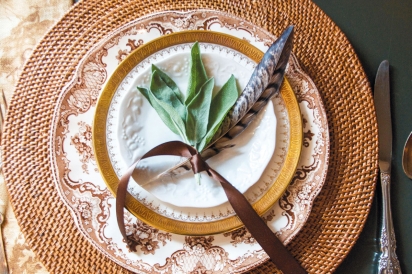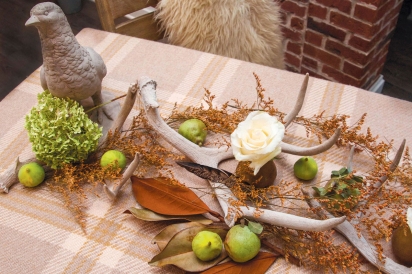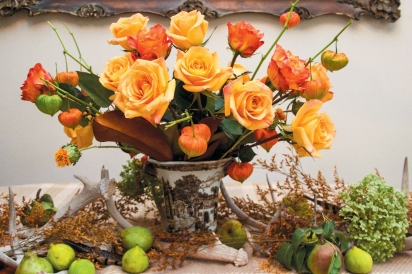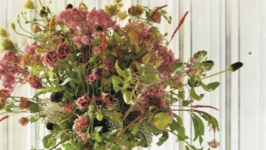Togetherness at Home: Setting the Table with Found Objects
Styling & Photography by Tricia Wheeler and Emily Kaelin
The urge returns with the season. When the weather cools, we retract along with the light of day. We pull loved ones into our fire circle, shut the door against the wind and surround ourselves with comforts. The Danes, masters of remaining joyful when the mercury drops and the landscape flattens, have a word for this inward turn. They call it hygge, a term which doesn’t exist in English, but combines the pleasures of “coziness,” “togetherness” and “wellbeing.” It’s a word I return to each fall, particularly when it comes time to set the table.
But how to create hygge? What we love is the idea of found objects: bits and pieces of your life that make you smile. They need not have anything to do with the table, but when brought there, they carry with them a sense of home and comfort, of coziness. What we’ve done here is design three seasonal tables using objects pulled from everyday life. For me, it was the feathers my daughter’s craft table. For our publisher, Tricia Wheeler, it’s the antlers she keeps as decorative objects year-round. Maybe the stone bird that stands sentry on the porch in good weather should winter at the end of the dining room table. Grab the wool blanket from your guest bed or collect magnolia leaves before the first snowfall. Your found objects are just that: yours. If creating a sense of home appeals to you in general, you’re bound to have them. Kids, in particular, instinctively know what makes a room hygge. Let them lead the hunt. You’ll create a new holiday tradition.
One of the pleasures of building a table in this manner is the assemblage of objects. We pause to see what we’ve found: a textured silk, a blackened brass bird, an antique skeleton key, an aged pewter cup, clippings from what remains of the garden, etc. Curios like these mark the current moment and remind us of moments past. They spark conversation, inviting guests into the history of the home and the hearts that have lived it.
Look One
We kept this look simple, focusing on layering patterns and textures. We stayed with a fall palette of brown, cream and gold, using natural materials like rattan, linen and silk. Fresh sage and a pheasant feather become a beautiful nosegay when tied with ribbon and fanned across the plate. Rub the sage gently between your fingers before inviting friends to join you at the table. The scent will rise, anticipating (invoking?) the meal to come. Keep the rest of the table simple with a mixture of candlesticks and votives, or layer in the elements from “Look Two” for a more maximal effect.
Look Two
For table two, we created a garland of household objects and seasonal fruit. We started with a Pendleton wool blanket instead of a tablecloth. Embracing the woodland picnic feel, we lay real antlers (shed annually) down the length of the table and tucked dried wildflowers in and around the points. Our overall palette was faded and soft so we brought in green, capturing the cusp of the seasons with clusters of late-summer figs and September’s first green pears. Fresh hydrangea, in bloom until mid-November, adds a different texture in the same color and reminds us that, thankfully, we’re not yet in the dead of winter. Cream-colored roses were clipped short at the last minute and nestled in the top of hollowed-out brown pears. Stone birds, recalling those that have flown south, anchor each end of the table. The space is one of comfort and abundance.
Look Three
For our third look, we added a traditional floral centerpiece to our garland of found and harvested objects. Wanting to celebrate the fiery hues of the season, we combined store-bought oranges, roses and Chinese lanterns from the garden, placing them in an antique English urn. To the fresh flowers we added dried magnolia leaves, a more muted shade of orange, from under the tree out back. We also repositioned the table against a wall, so that the plaster and antique frame add to the vintage European feel. This look, then, extends beyond the table. It pulls from the room around it to create an overall sense of warmth and tradition.







